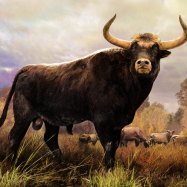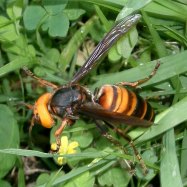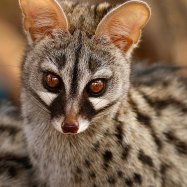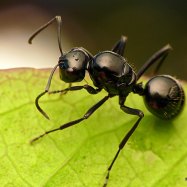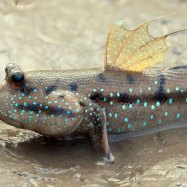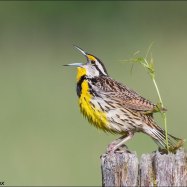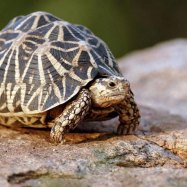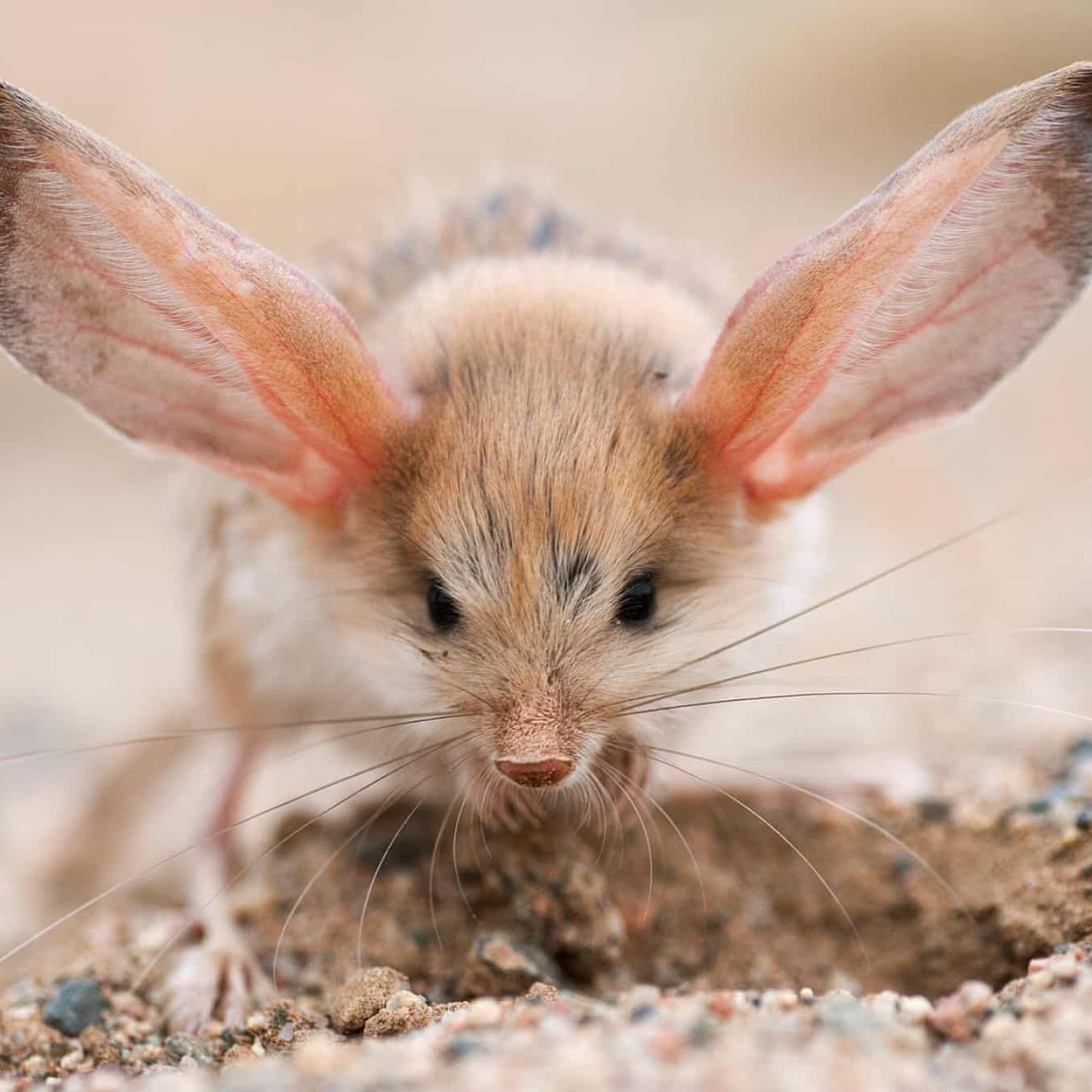
Jerboa
4 to 6 inches
Jerboas are small and slender desert rodents with long hind legs and a long tail. They can grow up to 6 inches long and are members of the Dipodidae family. You can spot these adorable creatures in the Gobi Desert, Sahara Desert, and the deserts of Central Asia. They are experts at jumping and can hop up to 10 feet in a single bound. #Jerboa #desertlife #cuteanimals
Animal Details Summary:
Common Name: Jerboa
Kingdom: Animalia
Habitat: Deserts
The Fascinating World of Jerboas: Surviving in the Desert
Imagine if we could hop and jump like kangaroos, scurry quickly like mice, and survive in harsh desert climates like camels. Sounds like a strange combination, doesn't it? But the Jerboa, a small rodent that has captured the hearts of many with its unique abilities, can do just that. These tiny creatures may seem like a cross between several different animals, but they are a species of their own, with their own set of interesting features.In this article, we dive into the world of Jerboas, exploring their physical characteristics, behaviors, and their ability to survive in the desert Jerboa.
About Jerboas
Scientifically known as Euchoreutes naso, Jerboas belong to the Animalia kingdom, the Chordata phylum, and the Mammalia class. They are part of the order Rodentia, which includes around 2,277 different species of animals such as mice, rats, and squirrels. The Jerboa family, Dipodidae, is made up of over 30 different species, with the Jerboa being one of the most well-known.Jerboas are small rodents that can grow up to 4 to 6 inches in length and weigh between 2 to 3 ounces. They have a distinctive appearance with a small round head, large eyes, and long, slender hind legs. Their body is covered in pale yellow or sandy brown fur with white underparts. This coloration helps them blend in with their desert surroundings, providing them with camouflage and protection from predators.
One of the most unusual features of the Jerboa is their long hind legs, which can be longer than the rest of their body. These legs are specially adapted for jumping, helping them move quickly through the sandy terrain and escape from predators Japanese Bantam Chicken. They also have a long, tufted tail that helps them maintain balance while hopping and jumping around.
Habitat and Distribution
As their name suggests, Jerboas are found in desert regions, with their natural habitat being the arid sands of Central Asia and Northern Africa. They are most commonly found in countries such as Mongolia, China, Kazakhstan, Uzbekistan, Turkmenistan, Iran, Afghanistan, Pakistan, and Egypt.Jerboas have adapted to living in a variety of desert environments, including the Gobi Desert in Mongolia and the Sahara Desert in Northern Africa. They can also be found in sandy or rocky areas with sparse vegetation and little to no water. Their ability to survive in such harsh conditions makes them fascinating creatures to study.
Feeding and Hunting
Jerboas are omnivorous, meaning they eat both plant matter and small insects. Their diet mainly consists of seeds, plants, and occasionally small insects such as grasshoppers and beetles. In the desert, food can be hard to come by, so Jerboas have adapted to getting most of their water from the food they consume. This is a critical survival technique in a place where water is scarce.Jerboas are nocturnal animals, meaning they are most active at night. This helps them avoid the extreme heat of the day, which can reach up to 110 degrees Fahrenheit in the desert. They have keen eyesight and a strong sense of smell, which helps them hunt for food in the dark.
Surviving in the Desert
The desert is a tough environment to survive in, but Jerboas have adapted to their surroundings and developed unique physical and behavioral traits to help them thrive. Their long hind legs allow them to jump up to 10 feet in one hop, helping them navigate through the unpredictable terrain of the desert.Jerboas also have large, sensitive ears which help them detect approaching predators. When they sense danger, they quickly hop away, using their long legs to make swift escapes. They can also make sharp turns while jumping, throwing off their predators and increasing their chances of survival.
Another incredible ability of the Jerboa is their ability to survive without drinking water for long periods. They have developed kidneys that can filter out excess salt from their urine, allowing them to retain more water in their bodies. They also have specialized oil glands that produce a waxy substance, which they spread on their fur to keep it clean and prevent water loss.
Intelligent Survivors
Jerboas may be small, but they are intelligent creatures. They have adapted to their harsh desert environment and have developed unique survival skills, making them successful in their ecosystem. Researchers have also observed that Jerboas have excellent spatial memory, allowing them to remember their burrows and navigate back to them easily, even in the dark.In a study conducted at the University of Cambridge, researchers found that Jerboas have a high level of cognitive ability, similar to that of some primates. They can also learn and remember complex tasks, such as navigating through a complicated maze, at a similar level to rats. This makes them intelligent animals that have the ability to adapt and learn new skills quickly.
The Danger of Human Interaction
Like many other species, Jerboas face threats to their survival due to human activities. One of the biggest threats to their habitat is urbanization and destruction of their natural habitat for agricultural purposes. Deforestation and land use changes are also causing a decline in their population.Furthermore, Jerboas are often hunted by humans for their soft fur, which is used to make clothing and accessories. This has led to a significant decrease in their numbers in some regions, and they are now listed as a vulnerable species.
It is essential to educate and raise awareness about the importance of preserving the natural habitats of these unique creatures to ensure their survival in the wild.
In conclusion, Jerboas are fascinating animals that have adapted to survive in one of the harshest environments in the world. Their physical characteristics and behaviors make them stand out in the animal kingdom, and their intelligence and ability to survive in the desert make them even more extraordinary. As humans, it is our responsibility to protect and preserve the habitats of these creatures and ensure they continue to thrive in their natural environment. Let us appreciate the uniqueness of the Jerboa and work towards their protection and conservation for future generations to experience and marvel at their incredible abilities.

Jerboa
Animal Details Jerboa - Scientific Name: Euchoreutes naso
- Category: Animals J
- Scientific Name: Euchoreutes naso
- Common Name: Jerboa
- Kingdom: Animalia
- Phylum: Chordata
- Class: Mammalia
- Order: Rodentia
- Family: Dipodidae
- Habitat: Deserts
- Feeding Method: Omnivorous
- Geographical Distribution: Central Asia and Northern Africa
- Country of Origin: Mongolia, China, Kazakhstan, Uzbekistan, Turkmenistan, Iran, Afghanistan, Pakistan, and Egypt
- Location: Jerboas can be found in desert regions such as the Gobi Desert in Mongolia, the Sahara Desert in Northern Africa, and the deserts of Central Asia.
- Animal Coloration: Pale yellow or sandy brown with white underparts
- Body Shape: Small and slender with long hind legs and a long tail
- Length: 4 to 6 inches
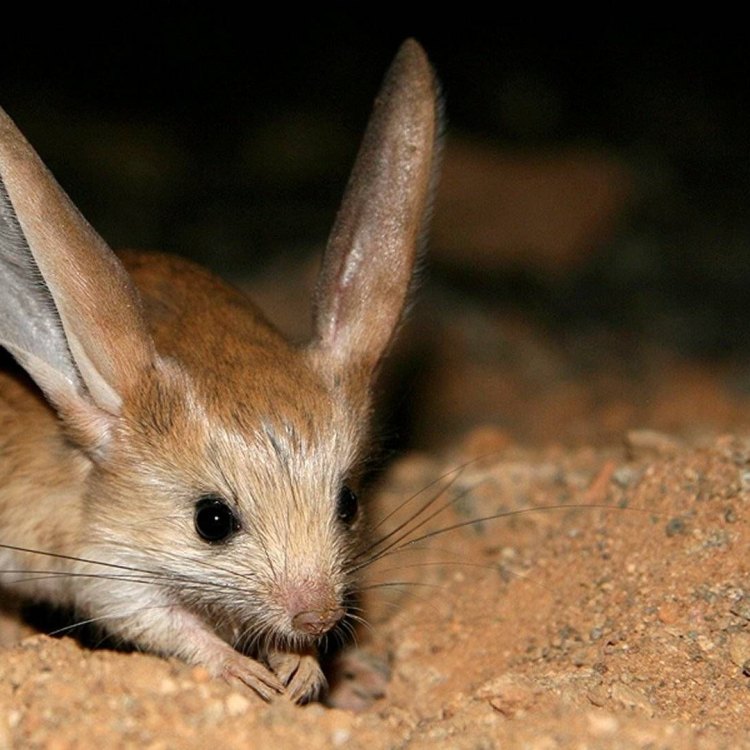
Jerboa
- Adult Size: 6 to 10 inches
- Average Lifespan: Up to 6 years
- Reproduction: Sexual
- Reproductive Behavior: Mating occurs in the spring and summer
- Sound or Call: Jerboas communicate using vocalizations and foot drumming
- Migration Pattern: Some species of jerboas are known to undertake seasonal migrations
- Social Groups: Most jerboas are solitary animals
- Behavior: Jerboas are primarily nocturnal and are well adapted to desert life
- Threats: Habitat loss and degradation, predation, and climate change
- Conservation Status: Vulnerable
- Impact on Ecosystem: Jerboas play a role in maintaining biological diversity and ecosystem balance
- Human Use: Jerboas are sometimes kept as pets
- Distinctive Features: Large ears, long tufted tail, and long hind legs
- Interesting Facts: 1. Jerboas can hop like kangaroos due to their long hind legs. 2. They have excellent hearing and can detect sounds from long distances. 3. Some species of jerboas can change their fur color to match the color of their surroundings. 4. Jerboas have been known to survive without water by extracting moisture from their food.
- Predator: Foxes, owls, and snakes
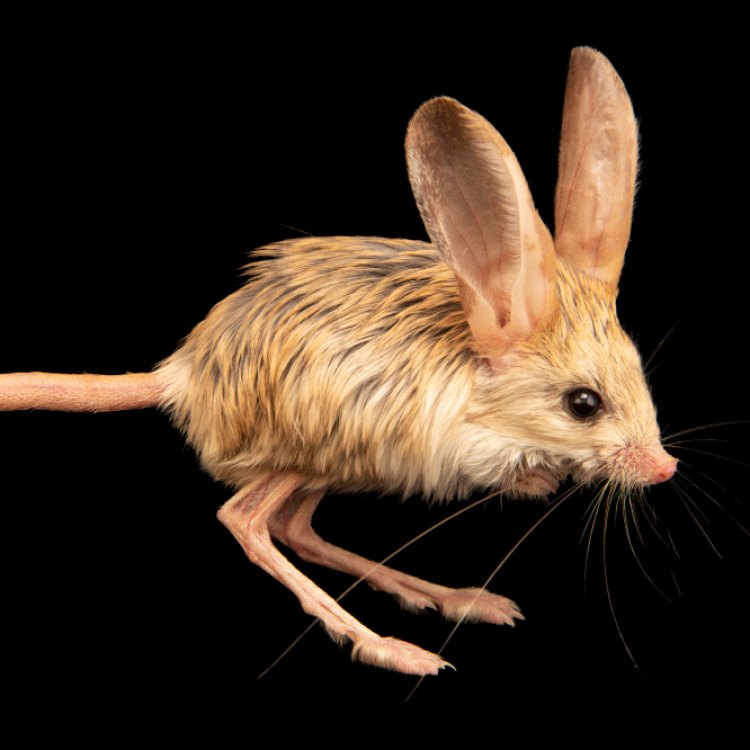
Euchoreutes naso
The Fascinating World of Jerboas: Masters of Adaptation and Survival
Deep in the vast, arid deserts of North Africa and Asia, a unique and incredible creature roams the sand dunes. With its elongated hind legs, large ears, and long tufted tail, the jerboa is a master of adaptation and survival in the harsh and unforgiving desert landscape. This elusive and extraordinary creature has captured the imagination of many and has inspired myths and legends for centuries. In this article, we will delve into the fascinating world of jerboas and uncover their unique features, behavior, and their vital role in maintaining the delicate balance of desert ecosystems PeaceOfAnimals.Com.Adult Size and Average Lifespan
Jerboas are small rodents that belong to the order Dipodidae, which translates to "two-footed" in Greek. They are typically between 6 to 10 inches in length, with their long, tufted tails contributing to nearly half of their total length. Due to their small size, jerboas are often mistaken for mice or gerbils, but these remarkable creatures are in a class of their own.
Despite their small size, jerboas can live up to six years in captivity, but their average lifespan in the wild is typically shorter due to various threats and challenges. With their unique ability to adapt to extreme desert conditions, jerboas have evolved to survive in a challenging environment and have developed a remarkable defense mechanism against predators.
Reproduction and Behavioral Patterns
Like many desert animals, jerboas have adapted their reproductive behavior according to the harsh and unpredictable conditions of the desert. Mating season for jerboas usually occurs in the spring and summer when the temperatures are slightly cooler and food is more abundant. During this time, male jerboas will compete for females by chasing and drumming their feet on the ground, creating a loud banging sound that can be heard for long distances.
Once a female chooses her mate, they will engage in sexual reproduction, resulting in a litter of typically 2-7 pups Jacana. These furry newborns are relatively independent and can move around and forage for food within a few days. However, they will still stay close to their mother for protection and nourishment until they are mature enough to venture out on their own.
Interestingly, jerboas are primarily solitary animals, and social groups are rare. They do not engage in communal activities and are only seen together during the mating season or when females are raising their young. This behavior further highlights their need for self-sufficiency and independence in the harsh desert environment.
Communication through Vocalizations and Foot Drumming
Jerboas may be solitary creatures, but they are not entirely quiet. They communicate with each other using a variety of vocalizations and through drumming their feet on the ground. This method of communication is known as "foot-drumming" and is a highly important form of communication in the desert landscape, where visibility is limited.
Jerboas have specialized hind feet with three toes, making it easier for them to drum on the ground. This behavior serves as a warning to predators or as a call to other jerboas in the area. Each species of jerboa has a unique drumming pattern, allowing them to identify their own kind and communicate effectively within their species.
Unique Features and Remarkable Adaptations
Jerboas are perhaps best known for their distinct appearance, with their large ears, long tufted tails, and elongated hind legs. These features are vital to their survival in the desert, where food and water are scarce, and predators are abundant.
The most striking feature of a jerboa is its large ears, which can grow up to one-third of their body size. These ears serve several purposes, such as detecting the slightest movements of predators and prey, regulating body temperature, and enhancing their hearing abilities. With their excellent hearing, jerboas can pick up sounds from long distances, helping them to avoid danger and find food sources.
Their long tufted tail is another remarkable adaptation that enables them to survive in the desert. This tail serves as a counterbalance when jerboas hop and jump, preventing them from losing their balance and allowing them to move swiftly across the sand dunes. Additionally, they also use their tail to signal, communicate, and express their emotions.
One of the most astonishing features of jerboas is their long hind legs, which are essential for their survival in the desert. These legs allow them to hop like kangaroos, and they can cover a distance of 2-3 meters in a single jump. This unique mode of movement allows them to evade predators swiftly and efficiently, making them incredibly difficult to catch.
Survival in the Harsh Desert Environment
Jerboas are well-adapted to survive in the harsh desert environment, where temperatures can reach over 100 degrees Fahrenheit during the day and drop dramatically at night. Due to their small size, these creatures are vulnerable to extreme heat and will usually retreat into burrows during the day to avoid the scorching sun. They will emerge at night to forage for food and water, using their specialized feet to dig in the sand for insects, seeds, and plant roots.
In addition to their physical adaptations, jerboas possess specialized kidney functions that allow them to extract moisture from their food, reducing their need for water. This unique ability to survive without water for extended periods makes them well-suited for life in the desert.
Threats and Conservation Status
Despite their remarkable adaptations and survival skills, jerboas face various threats that jeopardize their existence in the wild. Habitat loss and degradation caused by human activities, such as urbanization and agricultural expansion, is a significant threat to their survival. This loss of habitat disrupts their natural way of life and can lead to a decline in population.
Predation is another significant threat to jerboas, with predators such as foxes, owls, and snakes preying on these small rodents. Climate change and increasing temperatures also pose a risk to their survival, altering the delicate balance of the desert ecosystem and affecting their food sources.
As a result of these threats, the International Union for Conservation of Nature (IUCN) has classified jerboas as "vulnerable," highlighting the need for conservation efforts to protect these unique creatures and their fragile habitat.
Importance in Maintaining Ecosystem Balance
Jerboas may be small, but they play a vital role in maintaining the delicate balance of the desert ecosystem. As prey animals, they provide a food source for predators, keeping their populations in check. They also contribute to nutrient cycling and dispersing seeds, which helps in maintaining the diversity of plant life in the harsh desert environment.
Furthermore, jerboas are an essential part of the food chain, and their absence can have a domino effect on the entire ecosystem. This impact further emphasizes the need to protect and preserve their existence in the wild.
Human Use and Interesting Facts
Although jerboas are primarily wild animals, they have occasionally been kept as pets by some individuals. However, due to their complex care needs and specialized dietary requirements, it is not recommended to keep them as pets unless properly trained and equipped to do so.
Aside from their use as pets, jerboas do not have a significant impact on humans. However, these remarkable creatures have fascinated and inspired many, even appearing in various myths, legends, and folklore. Some Middle Eastern cultures even associate jerboas with good luck and prosperity, making them a significant symbol in their traditions.
Some interesting facts about jerboas include their ability to change fur color to match their surroundings, similar to chameleons, for camouflage. They have also been known to bury themselves in the sand during extreme weather conditions to regulate their body temperature, proving their incredible resilience and adaptation skills.
In Conclusion
In conclusion, jerboas are remarkable creatures that have adapted to survive in the harshest of environments. With their unique features and behavior, they have captured the fascination and imagination of many, and with their vital role in maintaining ecosystem balance, they have proven their importance in the delicate desert landscape. It is crucial to continue efforts to protect and preserve these extraordinary creatures to ensure their survival for generations to come.
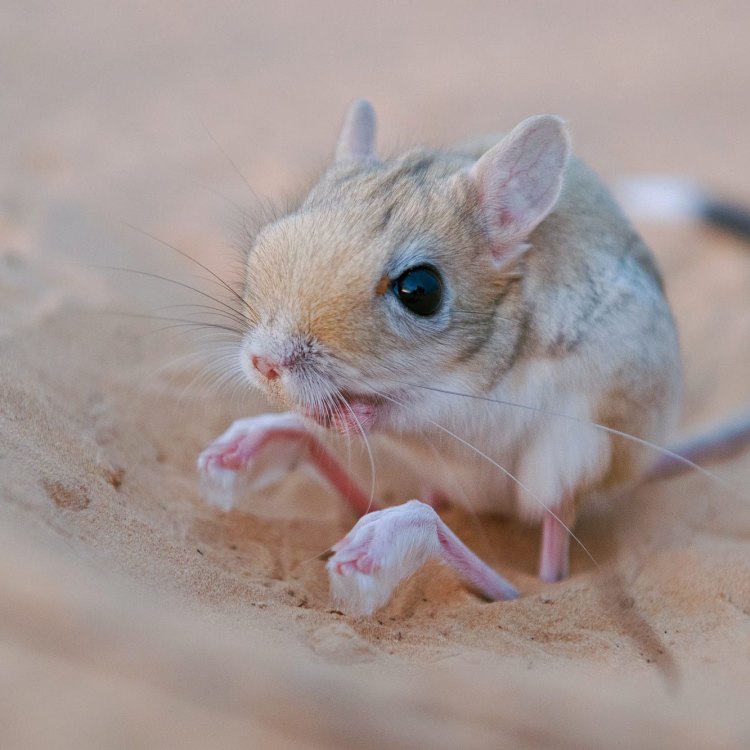
The Fascinating World of Jerboas: Surviving in the Desert
Disclaimer: The content provided is for informational purposes only. We cannot guarantee the accuracy of the information on this page 100%. All information provided here may change without prior notice.



